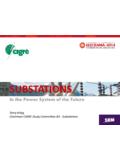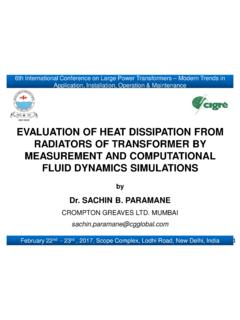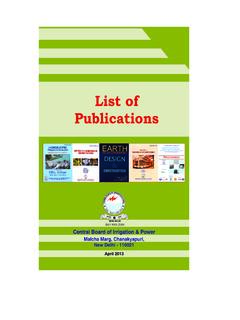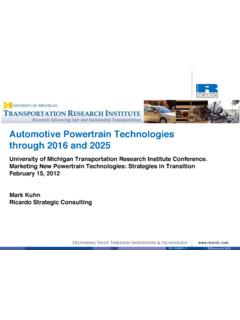Transcription of POWER SECTOR SKILL COUNCIL - Central Board of …
1 POWERSECTOR SKILLCOUNCILP roposedbyCentral ElectricityAuthorityon behalf of Ministry of POWER Ministry of New andRenewable Energy Indian Electrical andElectronics Manufacturers AssociationGlobalPeers Management GroupNew Information-Current SKILL Development Status-Different Segments of Industry-Key Drivers of Best Practices in the of PSSC of Likely Model of the of the Risks associated with the details/Profile of Management Documents attachedXIIIG lossary of items used in the proposalXIVA nnexure3 INTRODUCTION TO PROPOSALThis page introduces your Industry SECTOR , and the guiding philosophy behind this proposal .
2 Please fillin the following aspects (and any other that you wish), in a broad manner: Who are the promoters of this proposal ? What is the purpose? How is SKILL development being currently carried out in your Industry? What are the challenges?IntroductionPromoters:The POWER SECTOR SKILL COUNCIL (PSSC) is being promoted byCentral Electricity Authority (CEA)onbehalf of Ministry of POWER , Ministry of New and Renewable Energy (MNRE) & Indian Electricaland Electronics Manufacturers Association (IEEMA)and issupported by various PSUs,Associations, Organizations and Industry players in the POWER SECTOR , renewable energy SECTOR andpowerequipment manufacturing Electricity AuthorityCEA is a Statutory Body constituted under the erstwhile Electricity (Supply)
3 Act, 1948, hereinafterreplaced by the Electricity Act 2003, where similar provisions exists, the office ofthe CEA is an"Attached Office" of the Ministry of POWER . The CEA is responsible for the technical coordination andsupervision of programmes and is also entrusted with a number of statutory functions. One of the manyimportant responsibilities of CEA is topromote measures for advancing the skills of personsengaged in electricity industry, pursuant to which it is leading the effort to promote the POWER SectorSkill of New and Renewable Energy (MNRE)MNRE is the nodal Ministry of India for all matters relating to New and renewable energy withthe aim to supplement the energy requirements of the main activities of MNRE are tofacilitate R&D, manufacturing and deployment of new & renewable energy systems/devices, laying ofstandards, specifications, technology mapping and benchmarking, facilitate industry in obtainingappropriate international level quality assurance accreditation.
4 The major non conventional sources ofRenewable Energy are: Hydro-Energy (upto25 MW), Wind Energy, Solar Energy, biomass Energy,Tidal Energy, Geothermal Energy, Wave Energy, Biofuel Energy, Domestic & Industrial waste andBagasse Electrical and Electronics Manufacturers Associations (IEEMA):IEEMA is the national representative organization of manufactures of electrical and electronicsequipments. IEEMA representsabout800members organizations from public, joint and private sectorswith its members having distinctions of contributingto more than 95% of over210000Mw installedgenerating capacity in major activities of IEEMA are dissemination of information about Govt.
5 Policy changes andstatistics, representing view of the industry to Govt., formulating industry standards, operation andmaintenance guidelines to meet specific needs ofmembersand their users industries and conductingtechnical activities under their various divisions, organizing international conferences, workshops,training programs and quality awareness programs. IEEMA is part ofmany councils and committeesconstituted by the as the representative of the industry maintains a dialogue with Govt., various utilities, otherusers, standardization bodies, educational, R & D and testing institutions.
6 IEEMA is the certifiedbodyas per ISO 9001:2000. Sub-sectors of manufacturing SECTOR are manufacturing of main equipments,ancillary and allied industry, repair and maintenance of equipment, household and commercial electricalindustry5 Purpose:Indiais one of the fastest growing economies in the world with the Gross Domestic Product (GDP)growing for the last several years in spite of global recession. Development of adequate infrastructure isthe most critical prerequisite for sustaining the growth momentum of the economy and ensuringinclusiveness of the growth process.
7 In India, investment in infrastructure as a percentage of GDP hasrisen from in 2002-03 to over in 2010 and is expected to reach the target of 10% of GDP by2016-17. With India s growing population, urbanization and focus on Infrastructure development, thepresent surge in electricity demand and the projected increase of the demand, the importance ofavailable energy cannot be underestimated. The liberalization and globalization of the economy hasresulted in increased pace in industrial and commercial activities and this combined with penetration oftechnology and in the day-today life is expected to result in a high demand and growth in POWER .
8 Itis therefore essentialthat development of the POWER Industry is commensurate with the overall economicgrowth of the the POWER Industry is facing a major problem in getting skilled and employable manpowerwhich is technically competent and ready to be deployed. The industry thrives with ad-hoc sourcing ofmanpower and ad hoc training techniques. As per CIDC (Construction Industry Development COUNCIL ),it is estimated that only 3%-5% of the total blue collared workforce employed by the SECTOR has someformaltraining or are certified. The SKILL gap is widening every year and impacting critical functions andquality of output.
9 The shortage of skilled workforce may adversely impact the growth of this industry asthe current sources of training are not scalable as per the required manpower. There is an urgent need toidentify the gaps, asses the demand, build skilled workforce in millions for which all the Stakeholdersneed to work collectively to enlarge the pool of skilled purpose of establishingthe POWER SECTOR SKILL COUNCIL (PSSC) is to ensure that skilled and certifiedmanpower in adequate numbers is provided across various segments of this industry. The PSSC willcreate a dynamic Labour Market Information System (LMIS)
10 To keep track of the labour market, willidentify SKILL gaps, frame Occupational Standards in order to facilitate development of practical and highquality training content, ensure adequate availability of faculty through Train The Trainer initiatives,build accreditation and certification mechanisms and encourage capacity building through private some of the job roles may be common to other Sectors like Construction andCapital Goods, there is need for specialization of skills required to handle POWER Plants, Nuclear, Solar,Wind, Bio-gasses plants which carry a higher risk for human life especially the Nuclear Plants.














